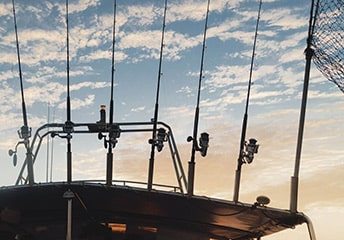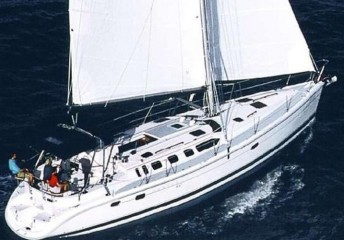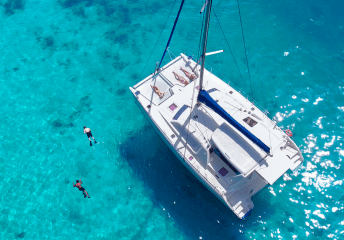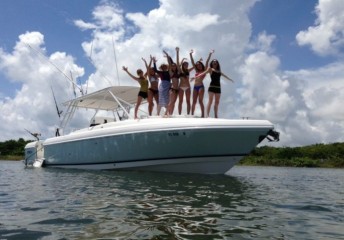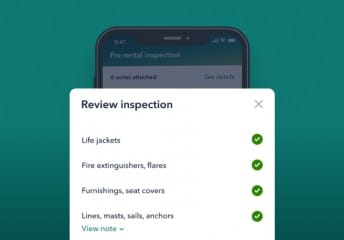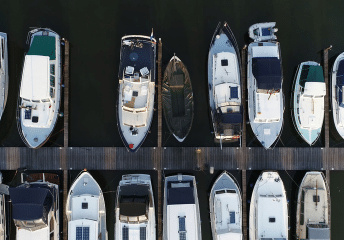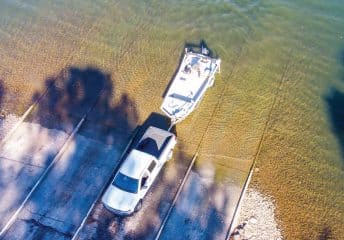Costs of Boat Ownership: How Much Does it Cost to Buy & Own a Boat?
Last Updated on July 28, 2023 by Boatsetter Team
Interested in buying a boat, but need to do some research about what exactly you’re getting into? Good thinking. The costs of owning a boat go far beyond just the initial purchase price and financing. Similar to many other items we purchase—like a car or a home, for example—learning how much it costs to buy and properly maintain this investment is an important first steps towards becoming a great boat owner.
Many boat ownership costs and expenses will be obvious to a first-time boat owner, while others might come as a surprise. Some, such as insurance and registration, are almost universal while others are more specific to the boat size, type and location. Expenses vary depending on your unique situation, but this guide will help you understand the basic costs of boat ownership.
8 Common Expenses of Owning a Boat
- Safety Equipment Required by the U.S. Coast Guard
- Storage and/or Marina Fees
- Regular Maintenance & Repairs
- Fuel
- Boat Insurance
- On-Water Towing Assistance
- Additional Gear & Accessories
- Trailer & Tow Vehicle
Learn How to Offset the Cost of Boat Ownership by Listing Your Boat with Boatsetter.

1. Boat Safety Equipment
Every boat must be equipped with gear required by the U.S. Coast Guard and your state regulations. This is sometimes called a “safety kit,” and some new boat dealers can supply many of these items and may include them with a boat, but most do not. A basic boat safety equipment checklist includes:
- Life jacket or personal floatation devices (PFDs) for every passenger onboard ($25 to $100 each) – If you boat with children you’ll need life jackets sized for them. Most states also require keeping a throwable floating cushion ($15) or ring on board.
- U.S. Coast Guard approved distress signal – which could be a set of flairs ($35) or an LED signal light ($80 to $150).
- Marine fire extinguisher ($25) – More than one may be required on larger boats.
- VHF radio – May not be required but is a good back-up to a cell phone for emergency use and also is handy for communicating with other boats, marinas, and law enforcement. Consider a basic floating hand-held VHF ($100) or fixed-mount ($150 to $400 plus antenna).
- Anchor and rode (chain) – A safety item when used to secure the boat if the engine fails or you run out of fuel. The anchor will keep you from drifting into danger. Of course it can also be used to secure the boat for casual situations. A basic fluke anchor ($50 to $150) works in most situations, but must be sized to the boat, and different types of anchor are designed for specific bottom conditions. Get some input from a local marine dealer on the best anchor choice for your situation. You’ll also need chain/rope rode for the anchor ($230 and up) sized for you boat and typical water depth where you boat.
2. Storage and/or Marina Fees
Eventually you’ll want to tie up to a dock. Or, you’ll get your boat out of the water for longterm or short-term storage. In either scenario, you’ll need:
- Dock lines ($30 to $100 each) – Sized to your boat, four to six lines required.
- Fenders (also called bumpers) – To protect the boat from the dock ($20 to $60 each) sized to your boat, two to four required.
- Launch fees – Usually charged at most public ramps, and varies at about $5 to $15 per launch.
- Mooring fees – If you plan to keep your boat in the water at a marina, there will be a charge based on the size of the boat, which can range from $15 to $45 a month per foot of boat length depending on the region, whether the marina is public or private, and its amenities. Shore power for electric service at the dock is usually extra.
- Dry stack storage – in which the boat is stored on a fixed indoor or outdoor rack at a marina, can cost $50 to $200 per month. The boat is lifted off the rack with a fork lift when you want to go boating, and there may be a fee for this. Many marinas also have an area where a boat can be stored on its trailer between outings, which is a more-affordable option. You may not be allowed to park your boat and trailer in your driveway in some communities.
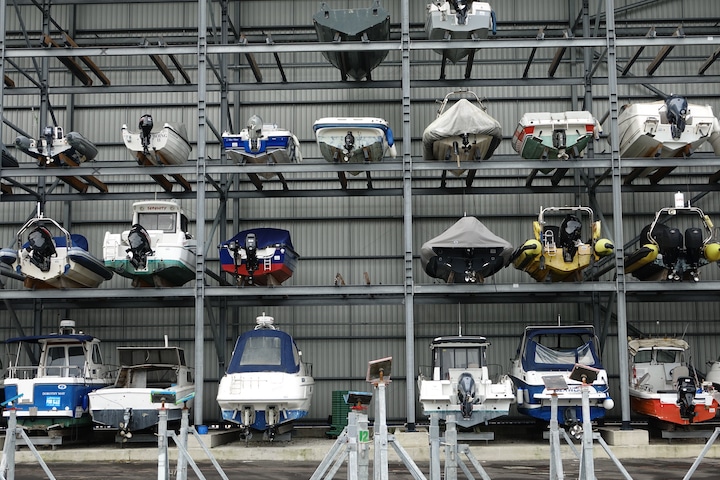
3. Regular Maintenance & Repairs
The cost of annual maintenance depends on the size and type of boat, whether it’s used in fresh or saltwater (and may need bottom paint, for example). Boat maintenance costs also depend on whether or not your boat needs to be prepared for off-season storage and winterized.
You can assume $500 to $2,000 or more per year. Owners of smaller boats can often perform basic maintenance themselves and only pay for parts and supplies like engine oil.
And of course, accidents happen. Even if you like to do-it-yourself, repair costs vary depending on the issue at hand, and if replacement parts are necessary. Opting for professional service or maintenance work will also include various service fees or costs of labor.
4. Fuel
Boats consume a lot of fuel—figure 8 to 12 gallons per hour of operation for single-engine runabout. If you purchase fuel at a marina, you’ll pay a premium over the cost at a filling station. When possible try to purchase fuel that does not contain ethanol, and use a fuel stabilizing additive with each fill-up.
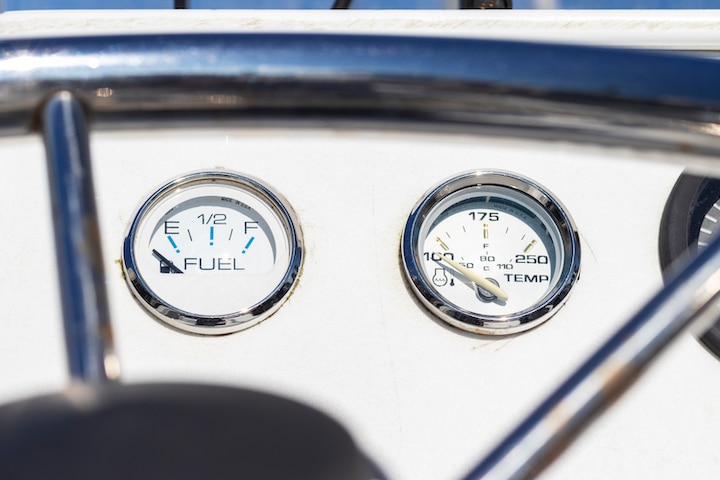
5. Boat Insurance
Liability and damage insurance premiums vary a lot by boat size, type and location. If you boat in a hurricane zone the premium will reflect that fact, for example.
A basic rule of thumb is 1 to 3 percent of the boat’s value. A carrier that specializes in marine insurance will understand the hazards and issues specific to boat coverage.
If you decide to list your boat on Boatsetter, our team offers extra peace-of-mind through our BoatUS Peer-to-Peer Rental Policy, specially designed to protect the boat owner and renter during a rental. This also includes on-water assistance through TowBoatUS, online boater safety certifications through the BoatU.S. Foundation for Boating Safety and Clean Water, and our world-class 24/7 support.
6. On-Water Towing Assistance
Like AAA service on the water, a towing assistance program can bring you gas if you run out or tow you to shore if your boat breaks down. This service is available on most larger bodies of water. Annual coverage from SeaTow (starting at $179 per year) is really affordable, while BoatUS often bundles its towing coverage with its insurance plans.
Again, Boatsetter owners receive the additional benefit of on-water assistance through TowBoatUS when enrolls within our BoatUS Peer-to-Peer Rental Policy.
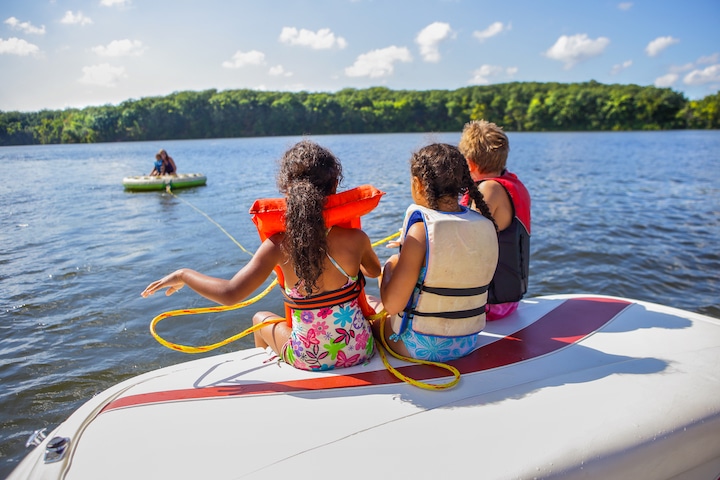
7. Additional Gear & Accessories
If you’re an avid angler ready to reel in the ‘big one,’ you’ll need all the appropriate gear to do so. That includes rods, reels, bait, fish finders, nets, rod holders, lures, you name it. The same concept applies if you’re interested in water skiing, wakeboarding, wake surfing or tubing. Count on purchasing the boards, inflatable tubes, and tow lines.
Other popular boating accessories that you might want to have onboard include:
- Marine electronics
- Stereo or Bluetooth speakers
- Sunscreen & sun protective clothing
- First aid kit
- Water toys
- Cooler
- Toolkit
8. Trailer & Tow Vehicle
Not every boat comes with a trailer, and a pre-owned boat may be on a trailer you’ll want to replace for safety reasons. Figure $1,500 to $5,000 for a trailer, depending on boat size.
Likewise, it’s not unusual for a family to buy a new trailerable boat, only to discover it’s too heavy to tow with the vehicle they already own. If a new truck or SUV is not in your budget, compare the combined weight of the boat, trailer and gear you are considered with the towing capacity as listed in your vehicle owners manual.
List Your Boat Today to Start Earning $20,000 or More Annually – Find Out How.
Editor’s Note: This article was originally published in December 2017 and updated in January 2022.

Charles Plueddeman is a self-employed writer and photographer based in Wisconsin. A staff editor and contributor to Boating Magazine since 1986, he is the author of its “Off My Dock” column. In the marine realm he specializes in engine technology and trailerable boats. His editorial work has appeared in many national publications, including Popular Mechanics, Men’s Journal, Playboy, Popular Science, Cycle World, and Harley-Davidson Enthuisast.





